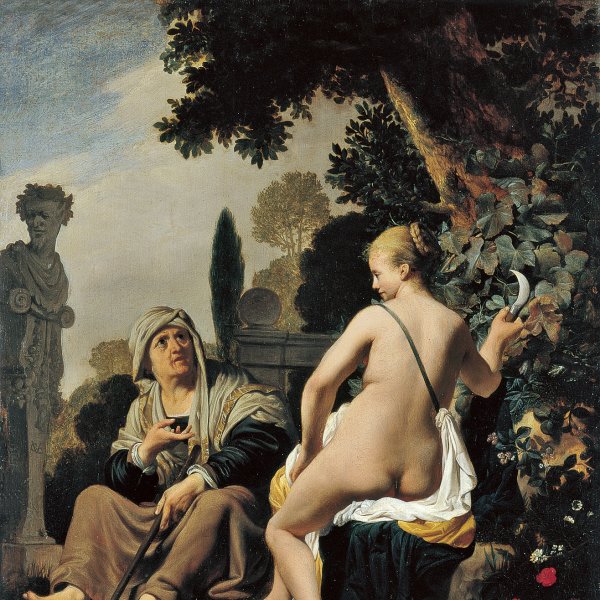Caesar van Everdingen
Alkmaar, ca. 1617-1678
Caesar van Everdingen was born in Alkmaar, the son of a notary and lawyer to the city council. No information survives regarding his training, although his early works reveal the marked influence of the school of Utrecht, which suggests that he trained there. This is also likely given that his brother, the landscape painter Allart van Everdingen, is known to have trained in that city. In 1636 he is registered in the guild of Saint Luke in Alkmaar. A large number of unsigned portraits have survived from the following years, while his first known, signed and dated work is the portrait of Officers of the Orange Company of the Almaar Civic Guard (Stedelijk Museum, Alkmaar) of 1641. From that date until 1643 Van Everdingen worked in Amersfoort, painting the decoration of the organ panels in the Grote Kerk in Alkmaar, supervised by the painter and architect Jacob van Campen. In 1646 van Everdingen married Helena van Oosthoorn in Heiloo and two years later moved to Haarlem. In the late 1640s and through Van Campen, Van Everdingen was commissioned to execute two large paintings for the Oranjezaal in the Huis ten Bosch, the royal residence near The Hague, painting The Allegory of the Birth of Frederick Henry and The Four Muses with Pegasus (in situ). Van Everdingen’s years in Haarlem are considered his most creative period during which he produced original and interesting works, encouraged by the innovative artistic climate in the city. They include Count William II granting Privileges (Rijnlandshuis, Leiden), executed in collaboration Pieter Post, and Jupiter and Callisto (Nationalmuseum, Stockholm). Together with Salomon de Bray and Pieter de Grebber, Van Everdingen can be considered one of the most important painters among the “Haarlem Academicists”.
Van Everdingen was dean of the guild of Saint Luke in Haarlem from 1655 to 1656 and a year later returned to Alkmaar where he lived for the rest of his life. Few works are known from his last years.
Van Everdingen was dean of the guild of Saint Luke in Haarlem from 1655 to 1656 and a year later returned to Alkmaar where he lived for the rest of his life. Few works are known from his last years.





